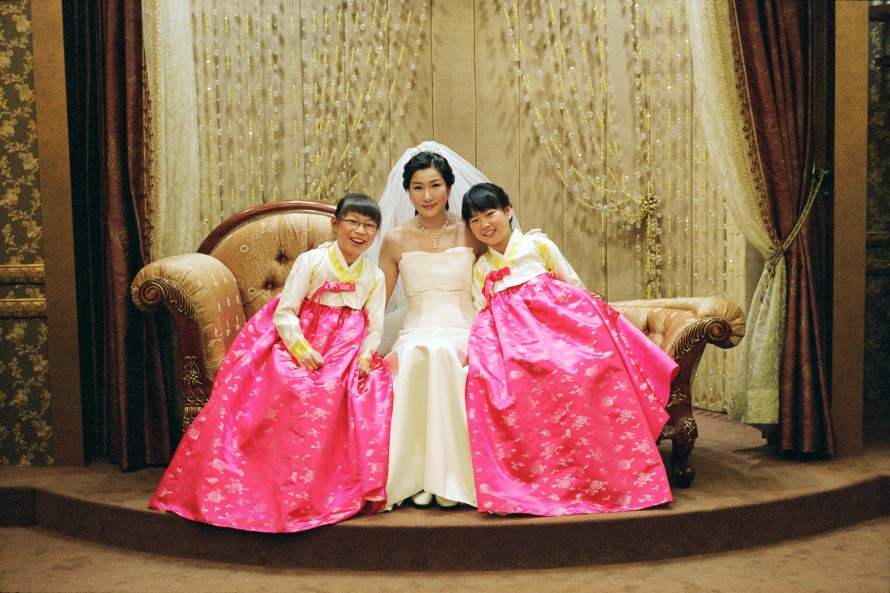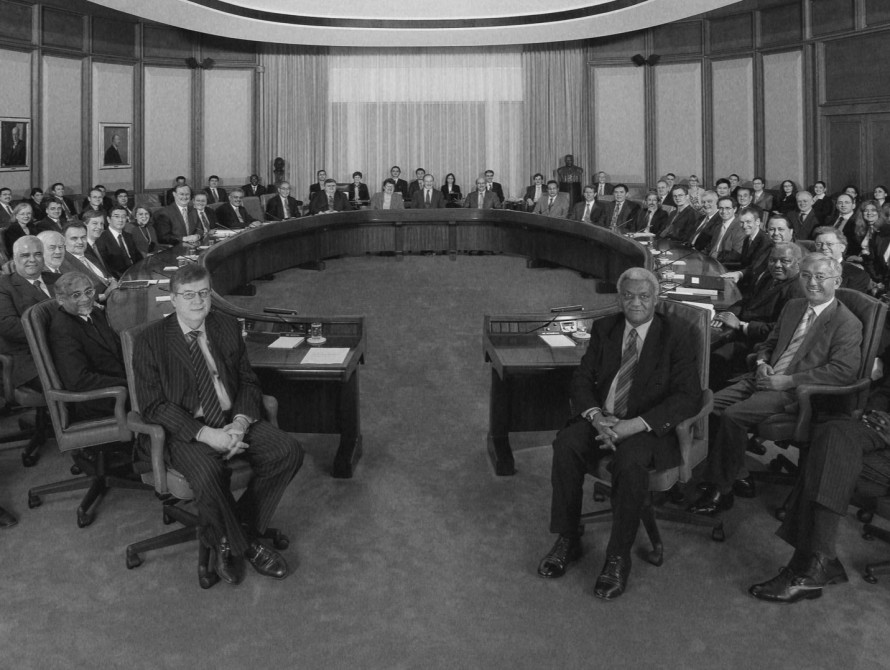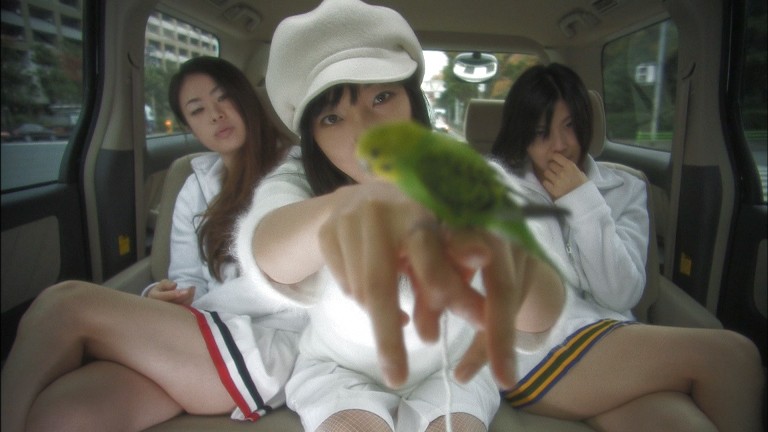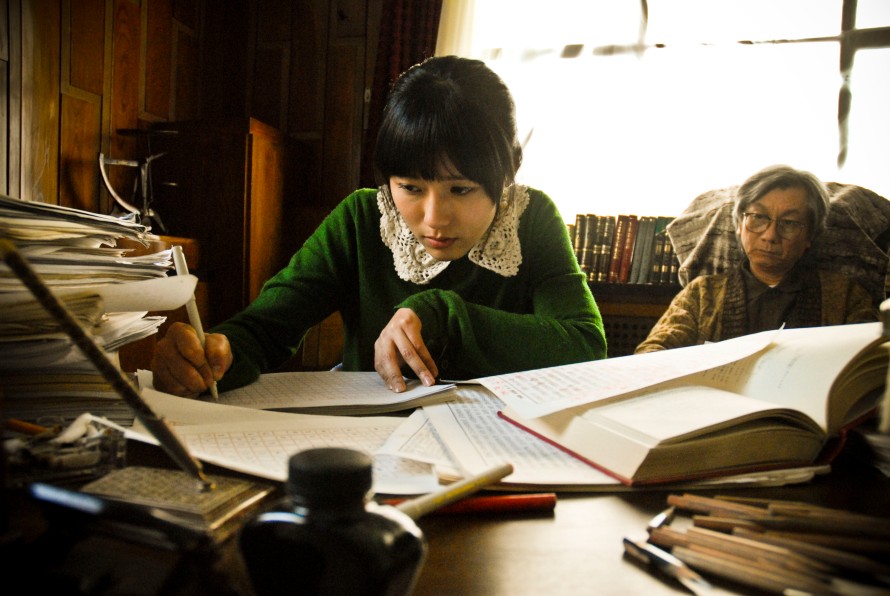2009 | Forum
Creatively Breaking with Tradition
With its abundance of aesthetic ventures and strong content, the 2009 Forum demonstrates that an eye for the big picture and a precise investigation of small situations are two sides of the same coin. Section director Christoph Terhechte talks about this year’s programme.

The Korean Wedding Chest by Ulrike Ottinger
A glance at the programme reveals that besides young filmmakers, a number of familiar faces and “old hands” are guests of the Forum again this year. Is that a change from recent years?
We did invite a few more “repeat offenders” to the 2009 Forum than we did in 2008. Although only two German directors can really be considered “old hands” – Ulrike Ottinger and Harun Farocki, who hasn’t been at the Forum for nineteen years now. So neither he nor Ulrike Ottinger can be said to have a reserved place in the programme, although we have shown several of her films in recent years. Overall though, the majority of the directors we invited this year are younger, and most of them are showing their second or third film.
Like Yoav Shamir, whose Flipping Out was in last year’s programme, and whose entry this year, Defamation, is pretty provocative stuff?
Defamation starts out as a film about anti-Semitism and about people who have set out to expose and fight anti-Semitism around the world. In the course of his research, however, the director discovers that insisting on anti-Semitism can also be a profitable business. The other, perhaps even more dramatic finding of Shamir’s film is the systematic indoctrination of young people in Israel, who are taught on a mass scale that the whole world hates Jews and that the only way to define oneself as an Israeli is on the basis of this worldwide animosity. Defamation is about the use and production of these kinds of negative stereotypes.
That sounds like a difficult subject, in the sense that there’s always the risk of getting caught up in a vicious discursive circle.
It is a very difficult subject, and I doubt the film will make many friends in Israel. We nevertheless think this film is absolutely worth showing, especially because our programme includes a contribution that functions as the more or less perfect counterpart to Defamation.
Letters to the President by Petr Lom is also about the manipulation of public opinion. The “president” here is Mahmoud Ahmadinejad, to whom the Iranian people are encouraged to write the “letters” – millions of petitions a year, in which the people supposedly share their worries with a president who then personally attends to them with the greatest solicitude. The idea that there is this degree of approachability is really quite a bold bit of propaganda. The film shows clearly how this kind of construction of identity is also intended to get people to take a stand against the hatred the entire non-Islamic world supposedly bears against Muslims – most of all, of course, the allegedly world-dominating Jews.
In Letters to the President, then, you have the mirror image of precisely the same kind of rehearsal of victimhood, the definition and identification of an entire people and religious community with being the victim, as is portrayed in Defamation. This equivalence also explains why both sides of the Israel-Palestine conflict feel themselves to be and portray themselves as the victim. No one seems to recognize that the only way out of this vicious circle is to acknowledge the fact that neither is the whole world against Muslims nor is the whole world against Jews, but that what most people want in the first place is peace. These two films are very well suited to stimulate a discussion along these lines.

Richard Brouillette's Encirclement
A Balance Between Film and History
Other documentaries in this year’s programme also reflect a strong focus on social and political issues.
The manipulation of public opinion is also one of the main themes in the Canadian documentary L’encerclement by Richard Brouillette. The film focuses on an almost sectarian, elitist group of neo-liberals who spread their fairytale of the free development and self-regulation of the market, and ultimately succeeded in infecting the entire global economy with this doctrine. These people are even arguing that the solution to the current financial crisis is getting rid of all barriers to business.
They’re actually still saying that?
Sure, although not in the film, which was completed before and is just very timely right now. Using mostly interviews, it documents in a very intelligent and meticulous way how it was possible for this small group to exert such a big influence on public opinion, particularly in business circles. A fascinating, intellectual work.
Another documentary that addresses the issue of public opinion-making in an entirely unpolemical way is the Israeli-French contribution A History of Israeli Cinema by Raphaël Nadjari. What’s great about the history Nadjari presents is that it is not limited to cinema, but extends equally to that of the country itself. There are many historical films that, as it were, misuse cinema as evidence and testimony of particular historical events, just as there are many histories of film that aren’t concerned with sociological and historical conditions. This film however strikes a balance between the two and uses one to explain the other. It shows why and when certain historical developments had the need for and generated certain films and how the films in turn influenced the mood in the country. Without making a big fuss, A History of Israeli Cinema is ultimately a film about the crucial role of the media, and particularly film, in the shaping of public opinion.
But of course we’re also showing many films that deal with social and political issues on a different level, without necessarily aiming at the big picture – The Mermaid and the Diver by Mercedes Moncada Rodríguez, for instance, which is a very quiet, poetic, almost fairytale-like film. Or Mr Governor by Måns Månsson, which, although it takes politics as its subject, does not really want to be political in any substantial sense, but is rather interested in a phenomenological observation of how the political stages itself. Another unusual film is the almost four-hour Dr. Ma’s Country Clinic from China, which taken as a whole can be seen as a documentary about the lack of opportunities and prospects of the rural population and the migrant workers in that country. Its specific interest though is in individual people, the clinic patients seeking treatment for their ailments who talk about their lives and their psychological problems.
I am also very pleased that we have two Eastern European films in this year’s programme that take aim at the state of society with a great deal of irony and humour. In the Romanian contribution The Happiest Girl in The World, a girl wins a car and is then supposed to play the titular happiest girl in an advert, which ends up being pretty hilarious. Help Gone Mad is the story of a Belorussian who goes to Moscow in search of work, where an old engineer gathers him up off a park bench and takes him back to his warm apartment. Before he knows it, he finds himself deeply involved in strange goings-on, and gradually realizes that the old man is totally insane. As funny as Help Gone Mad is, it casts a pretty bitter light on Putin’s Russia.
So the programme as a whole is not really a politically militant one in that sense.
Not necessarily militant, but many of the films do open up larger frameworks and integrate broader contexts.
Yes of course. Ultimately that’s also true for a film like Mental by Soda Kazuhiro from Japan. Besides the specific cases it looks at, this film is certainly also about the treatment of the mentally ill in a more general sense.

Sakura Ando in Ai no mukidashi (Love Exposure)
A Range of Cinematic Possibilities
Many of the films take a close look at the human psyche – I was particularly struck by the recurring theme of trauma. How do the films formally engage with the psychological dimensions of human life?
The filmmakers approach this subject matter in a wide variety of ways, of course. There are symbolist films like Winterstilte by Sonja Wyss, which is primarily about passionate desire and the suppression of female sexuality. The story is set in some undefined past in a Swiss mountain village that hasn’t quite caught up to reality yet. A pretty archaic environment in other words.
Can Go Through Skin takes a different approach. This film tries to directly render in visual form the psychological injuries and delusions of a woman who has suffered several traumas. There are also films that use more neo-realist means, like Naked of Defenses that depicts a woman’s psychological state after a miscarriage, while films like Love Exposure visualize psychological traumas and wounds in an extremely graphic, almost cartoon-like way. These many different takes on the subject serve well the Forum’s ambition of covering the widest range of cinematic forms of expression possible.
Another theme this year seems to be the relationship between the generations and the question of preserving tradition.
Deep in the Valley by Funahashi Atsushi is a good example of that. The generational conflict in this film plays out in Yanaka, a neighbourhood in northeastern Tokyo where the old spirit of the city can still be felt. The filmmaker uses memories of a five-story wooden pagoda that burnt to the ground there in 1957 as a kind of hook for a cinematic engagement with the locals’ sense of tradition. What’s interesting about this film is that it is a documentary that also includes scripted elements. One of the plot lines is set in the present and tells the story of a film club looking for 8mm footage of the fire. A second plot line is based on a Japanese novel and tells the story of the pagoda’s construction. A young architect had to break with his teacher in order to build what was at the time a new kind of pagoda, which then went on to become a masterpiece of Japanese architecture. So of all people it is this young man who committed the impossible act of knocking his master off the throne that the older generation admires today as one of the great founders of tradition. This relativizes the conflict between the generations very nicely, I think.

Ji-eun OH and Jin-young PARK in Jangryesigeui member (Members of the Funeral)
Strong Korean Cinema
You always tend to have a lot of films from Asia – last year especially from Japan and Southeast Asia, the Philippines. Where are the Asian films from this year?
There are several Japanese films in the programme again this year. Citizen Juling by Ing K and Kraisak Choonhavan is from and about Thailand, and we are also pleased to be able to present an Indonesian film, Garin Nugroho’s The Blue Generation. We would certainly have liked to show more such films, but a geographical emphasis tends to emerge from what is on offer any given year rather than being something we plan for.
Such an emphasis this year ended up being Korea, which really surprised me. While a few years ago Korean cinema was still the motor of the East Asian film industry, today it is actually in a sorry economic state. We nevertheless have several films from Korea in our programme. Most of them fall into the low budget category, but have their very own, incredible style. Two of the films are thesis films from KAFA, the Korean Academy of Film Arts: The Day After by Lee Suk-Gyung and Members of the Funeral by Baek Seung-Bin. Treeless Mountain by So Yong Kim is not a Korean film per se. The director already made In Between Days, which she showed in the Forum in 2006, in Canada; that film is loosely based on her own teenage years. Treeless Mountain is inspired by her early childhood, which she spent in South Korea.
Land of Scarecrows with its novelistic style, but also extreme minimalism, is very unusual for a Korean film. The synopsis suggests a five-volume nineteenth-century Russian novel, but it is actually a very reserved, simple film in the best sense of the word.
And, last but not least, we’re showing My Dear Enemy by the renowned director Lee Yoon-Ki, starring the fantastic Jeon Do-yeon, who won the Best Actress prize at Cannes two years ago for her role in Secret Sunshine. My Dear Enemy is a very precisely told story about the ambivalent relationship of a former couple.
Taken together, these films add up to a panorama of semi-commercial Korean cinema, which is obviously still flourishing, while very little is happening at the moment at the medium level of commercially ambitious arthouse cinema. That was a pleasant surprise to us. But there is a strong showing in our programme not only of Korean cinema, but of Asian cinema as a whole, from the Middle East to China, Japan, and Southeast Asia. If you consider the low number of Asian productions in this year’s Competition, we’re glad to make up for the lack – especially since the Forum has always seen itself as something of a complement to the official festival programme.